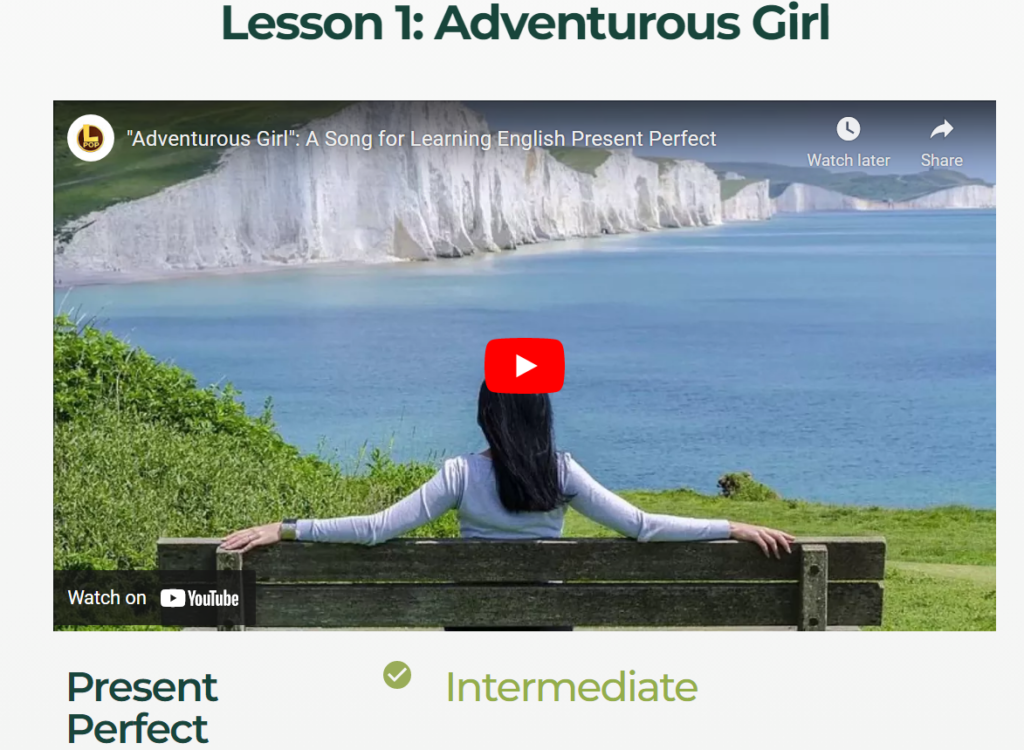Most ESL teachers are aware that all four skills of language teaching—reading, writing, listening and speaking—are important for language learning. However, there are often particular challenges to providing good activities for listening, in particular when it comes to grammar lessons. This situation is unfortunate, especially since some researchers have argued that listening to and comprehending grammatical structures leads to faster and more long-lasting improvement in language abilities than does traditional grammar practice (e.g., Van Patten, 2002).
A faculty member in TESOL at Michigan State University, Patti Spinner, has addressed this problem by creating music-based grammar lessons called L-Pop. Music is an appealing pedagogical tool for a variety of reasons. First, it presents listening material in a natural context, one of the goals of modern communicative language teaching. Second, students and teachers find it a welcome alternative to typical text-based classroom exercises, and it helps cultivate a relaxed and open classroom atmosphere. Third, the natural rhythms of music and lyrics help emphasize the stress patterns of speech (Cullen, 1999), which is especially important for pronunciation development in second language learners. Fourth, if the songs are appealing, students may listen to them outside of the classroom, providing additional reinforcement of in-class work.

Each song includes multiple instances of one commonly-taught grammatical structure in a variety of appropriate forms and contexts, including contrasting forms when appropriate. For example, the song focusing on adjective phrases includes those with both present and past participles, and both regular and irregular verbs.
The lyrical content of each song is upbeat, coherent, and thematically appropriate for a global audience. Highly abstract lyrics and controversial topics are avoided. Vocal delivery places an emphasis on clear articulation and are fronted in the recording and mixing process to make them easier to hear. Unlike most made-for-the-classroom musical fare, these songs are catchy, “radio-friendly,” and professionally produced. The songs reflect a variety of sub-genres of American popular music, including rock, alt pop, and country, to appeal to a variety of tastes.
Each lesson includes lyric sheets and a teaching guide. For instance, cloze activities, in which students fill in words they hear while listening, work on bottom-up listening skills by encouraging students to listen for particular words or phrases. This is especially useful in grammar instruction, since students can listen for verb endings, regular and irregular forms, and specific grammatical structures. Other activities encourage students to think about the meanings expressed by the grammatical structures. These activities encourage top-down listening skills. For instance, students may listen for sequential events in a song, then talk about similar events in their own lives.

To decide which grammatical structures to focus on, Spinner examined ESL textbooks to determine which forms were most frequently included. The structures in the first nine songs are passive voice, past perfect, present perfect, phrasal verbs, infinitive phrases, adjective phrases (reduced adjective clauses and full adjective clauses), present progressive, wh-noun clauses, and real conditionals.
The songs are free and will be useful all over the world for both K-12 classrooms and adults. The global availability of these song lessons will improve the already strong standing that Michigan State’s TESOL program enjoys not only in the United States but internationally.
L-Pop can be found here: https://lpop.commons.msu.edu/
References:
Cullen, B. (November 1999). Song dictation. The Internet TESL Journal. http://iteslj.org/Techniques/Cullen-SongDictation.html.
Van Patten, B. (2002). Processing instruction: An update. Language Learning 52, 755-803.


